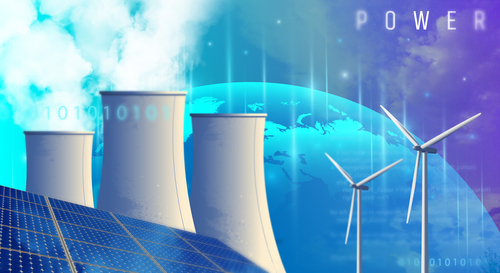Leadership and risk-taking: Experts share the key to deploying clean energy resources faster

Facing a steep growth in demand for electricity, the power sector must adjust to decarbonize the grid while maintaining grid resiliency, based on federal, state and corporate emissions targets.
But for clean energy resources to be deployed faster, strong leadership is key and winning technologies must get picked to ensure supply chains are in place, experts said on Thursday, at an event hosted by the American Enterprise Institute. The discussions focused on increasing speed and scale in the adoption of resilient, reliable, distributed, renewable and U.S.-controlled power.
Critical technologies, from small modular reactors to battery storage, could be deployed faster if strong leadership and collaboration is focused on deployment, specifically when it comes to navigating state, interregional and federal siting and permitting roadblocks, according to the panel discussion at AEI’s event.
“It can be done, but people have to get out of their own pigeon holes and their own silos to get it done,” Sean McGarvey, president of the North American Building Trades Union, said on AEI’s industry panel. Referencing the construction sector, he said workers are ready for the variety of contracts that have already been announced to begin construction.
As a world power, the U.S. ought to lead in the deployment of new technology, such as small modular reactors, panelists said. But there are a variety of SMR technologies vying to be commercially successful right now, and each would require “its unique supply chain,” according to Jaquelin Cochran, director of the Grid Planning and Analysis Center at the National Renewable Energy Laboratory.
“So if we wanted to really build SMRs quickly, we would have to put our thumb on the scale and say, ‘OK, we’re going to anoint this technology the winner and we’re going to get the supply chain worked out,'” Cochran said on the panel.
The Department of Energy is exploring pathways for producing high-assay low-enriched uranium fuel in the U.S. to secure fuel for future advanced reactors.
The Nuclear Regulatory Commission certified the first SMR design in the U.S. last year, from NuScale Power, and the first power module is expected to be operational in 2029, but some panelists protest the timelines are too long to deployment.
“We can’t take 10 years to do things, we have to get together on the policy side,” McGarvey said, adding that the U.S. is falling behind Canada on SMR technology.
Canada has several sites being assessed for SMR deployment, and completed the first construction phase of a 300 MW advanced reactor site in Ontario, according to an announcement on Monday.
New projects, whether it’s advanced nuclear or other emerging technologies, will require strong leadership to ensure a positive track record from the beginning, the panelists agreed.
“In our scorecard, at the end of the day, what matters is when they deploy things,” said Jeff Weiss, executive chairman of Distributed Sun.
He expressed a need for developers to prioritize a smooth starting point: having a small number of projects with fewer permitting roadblocks will help build the way to eventually scaling up deployment.
“At the more detailed end, there’s a logic to how you get started, and sometimes [certain] projects are disruptive to an organization,” Weiss said.
Panelists discussed the difficulties posed by increasingly complex distributed resources. In five more years, “the grid is going to have far too many two-way flows, more customer control,” than it was designed for, according to Scott Aaronson, Senior Vice President of Security and Preparedness at Edison Electric Institute (EEI).
The grid is evolving as a platform for a variety of distributed resources, he said. While that means opening up critical infrastructure to more points of vulnerability, Aaronson sees the electric sector taking cybersecurity “extremely seriously.”
“We need resilience, the ability to respond, the ability to share equipment and material, the ability to not let the bad days become catastrophic,” he said.
Aaronson shared a lot of optimism regarding the expectations of energy needed to power artificial intelligence, comparing the projections today to hysterical headlines from the advent of the internet.
“We were going to have a demand growth that was unseen before. That demand never materialized to the level that we expected because data centers… prioritized efficiency,” Aaronson said.
However, he pointed out, the growing concern over meeting the power demand for AI could be harnessed to “get through those kinds of stovepipe self-interested jurisdictional policy issues and actually allow us to grow the grid,” Aaronson said.
